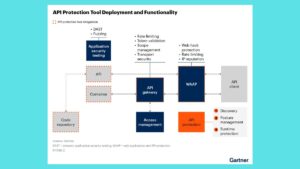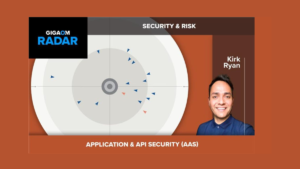How to Enhance HR Decision-Making Through Talent Intelligence

In today’s competitive business environment, organizations are increasingly recognizing the importance of data-driven decision-making, particularly in human resources (HR). As companies strive to attract and retain top talent, the need for effective talent management strategies becomes paramount. Talent intelligence, which refers to the collection and analysis of data related to workforce talent, is revolutionizing how HR departments operate. By leveraging talent intelligence, organizations can enhance their decision-making processes, ultimately leading to better hiring outcomes, improved employee engagement, and optimized workforce planning.
This blog explores how organizations can harness talent intelligence to enhance HR decision-making and drive strategic success.
1. Understanding Talent Intelligence
Before delving into its impact on decision-making, it’s crucial to understand what talent intelligence entails. Talent intelligence encompasses a variety of data points, including:
- Candidate data: Information gathered during recruitment, such as resumes, skills, experiences, and assessments.
- Employee performance metrics: Data on employee productivity, engagement, retention rates, and career progression.
- Market insights: Information about industry trends, salary benchmarks, and competitor talent strategies.
- Employee sentiment: Insights derived from surveys, feedback, and engagement scores that reflect employee satisfaction and workplace culture.
By synthesizing these data points, organizations can gain a holistic view of their talent landscape and make informed HR decisions.
2. Enhancing Recruitment Strategies
One of the most significant areas where talent intelligence can enhance HR decision-making is in recruitment. Traditional hiring processes often rely on gut feelings or outdated practices, leading to poor hiring choices. Talent intelligence can improve recruitment strategies in the following ways:
- Data-Driven Candidate Sourcing: By analyzing historical hiring data, organizations can identify the traits and qualifications of successful employees, enabling them to source candidates who closely match these profiles. This data-driven approach helps streamline the recruitment process and increase the likelihood of successful hires.
- Predictive Analytics: Leveraging predictive analytics tools can help HR professionals assess candidates’ potential success in specific roles based on past performance and current trends. This enables HR teams to make more informed decisions and select candidates who are likely to thrive within the organization.
- Reducing Bias: Talent intelligence tools can help reduce unconscious bias in recruitment by standardizing evaluation criteria. By focusing on data-driven assessments rather than subjective opinions, organizations can create a more equitable hiring process and enhance diversity within their teams.
3. Improving Employee Development and Retention
Once talent is onboarded, organizations must prioritize employee development and retention to maintain a competitive edge. Talent intelligence plays a vital role in fostering employee growth and satisfaction:
- Personalized Development Plans: Analyzing employee performance data enables HR teams to create personalized development plans tailored to individual strengths and weaknesses. This approach empowers employees to pursue growth opportunities that align with their career aspirations, ultimately leading to higher engagement and retention rates.
- Skill Gap Analysis: By identifying skill gaps within the organization, HR can implement targeted training programs to address these deficiencies. Talent intelligence can highlight emerging skills needed in the industry, allowing organizations to proactively upskill their workforce and remain competitive.
- Predicting Turnover: By analyzing trends in employee sentiment and performance, organizations can identify employees who may be at risk of leaving. This insight allows HR teams to intervene proactively, addressing concerns and enhancing engagement efforts to retain valuable talent.
4. Enhancing Workforce Planning
Effective workforce planning is essential for aligning HR strategies with overall business objectives. Talent intelligence provides valuable insights that inform strategic workforce planning in several ways:
- Demand Forecasting: Analyzing market trends and business growth projections enables HR teams to forecast future talent needs accurately. This proactive approach ensures organizations have the right talent in place to meet upcoming challenges and capitalize on opportunities.
- Resource Allocation: By utilizing talent intelligence data, HR can optimize resource allocation by identifying which teams require additional support or which roles are critical to achieving strategic goals. This insight helps ensure that talent is deployed effectively across the organization.
- Succession Planning: Talent intelligence can identify high-potential employees who are ready for leadership roles, enabling organizations to create robust succession plans. By nurturing internal talent, organizations can ensure a smooth transition in leadership positions and maintain organizational stability.
5. Fostering a Data-Driven Culture
To fully leverage talent intelligence in HR decision-making, organizations must foster a data-driven culture. This involves:
- Investing in Technology: Implementing talent intelligence platforms and analytics tools that can collect, analyze, and visualize data effectively is crucial. Investing in the right technology ensures HR professionals have access to the insights they need to make informed decisions.
- Training HR Professionals: Providing HR teams with the necessary training to interpret data and use analytics tools effectively empowers them to leverage talent intelligence in their decision-making processes. Continuous education will ensure that HR professionals stay up-to-date with evolving trends in talent management.
- Encouraging Collaboration: Promoting collaboration between HR, IT, and business leaders can enhance the use of talent intelligence across the organization. By working together, teams can share insights and align talent strategies with broader business objectives.
Conclusion
As organizations navigate the complexities of talent management in 2025 and beyond, leveraging talent intelligence is essential for enhancing HR decision-making. By utilizing data-driven insights to inform recruitment, employee development, workforce planning, and overall HR strategy, organizations can build a more agile, engaged, and high-performing workforce.
Ultimately, talent intelligence empowers HR professionals to make strategic decisions that drive organizational success, ensuring that the right talent is in place to meet future challenges. By embracing talent intelligence as a core component of their HR practices, organizations can not only enhance decision-making but also cultivate a culture of continuous improvement and innovation.






